Two
October 2010
With many of the most essential features now covered, forScore 2 was our first opportunity to step back and review some of our original assumptions. It was a chance to rewrite the rules before we pushed forward into another big cycle of improvements and refinements.
The first and most radical change we made was to remove the built-in scores. Although they served an important role in demonstrating the potential of an app like forScore, they quickly became more of a hinderance. Instead of needlessly separating out a user's files from the ones we'd included, we offered them as free downloads through the in-app browser.
After having quickly run out of room in the navigation bar, a new 'more' menu (later the tools menu) freed us from needing to find a place for every single feature all the time. The addition of bookmarks was also key, allowing people to work with scores in a larger book without needing to split them up beforehand. Half-page turns, cropping, keywords, and Bluetooth file transfers rounded out this series of releases as we moved from simply covering the basics to actually extending the capabilities of our users.
We also learned an important lesson from our first few months: for some features, there's no point in trying to find a set of defaults to suit most people most of the time. With an audience as rich and diverse as ours, with needs spanning the full gamut of instruments and styles, some features need to be bigger.
The perfect example is annotation, and no matter how much we tried we could never establish a comfortable, finite set of drawing styles and stamps. Instead, we stepped back and developed ways for people to create their own tools.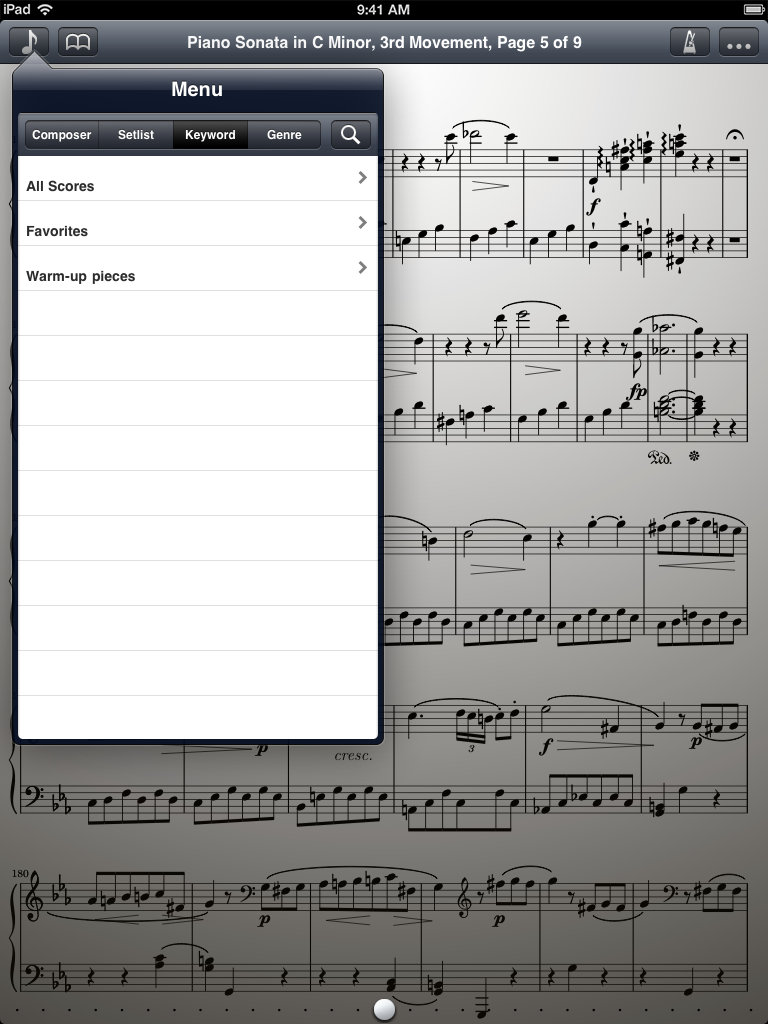
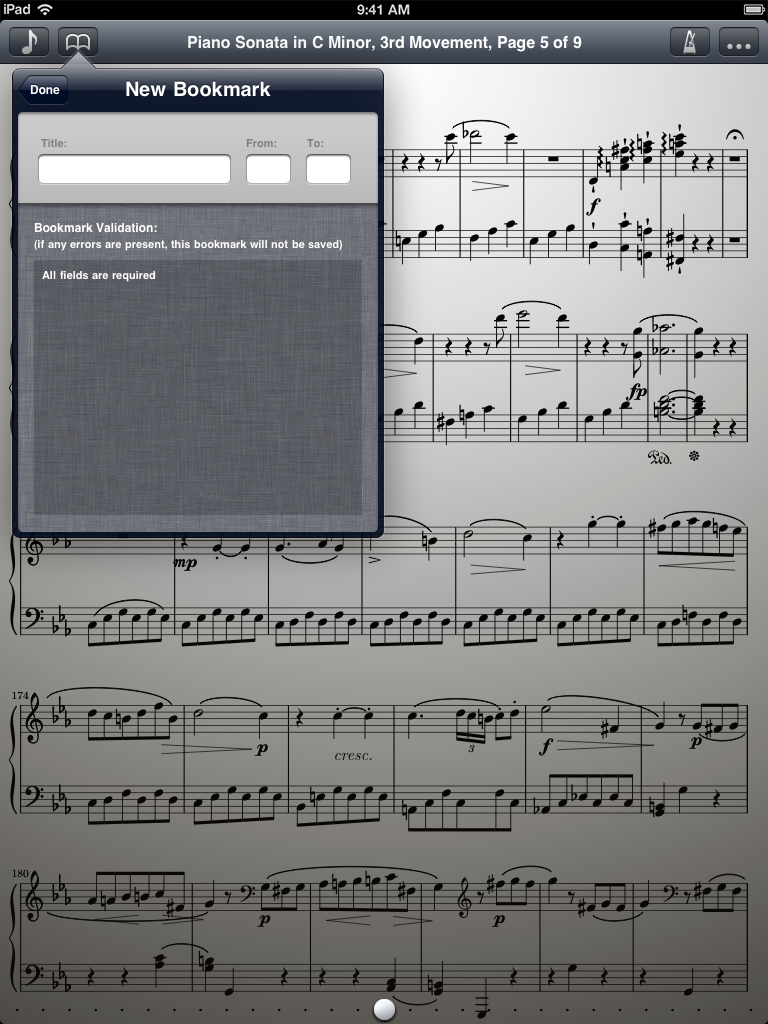
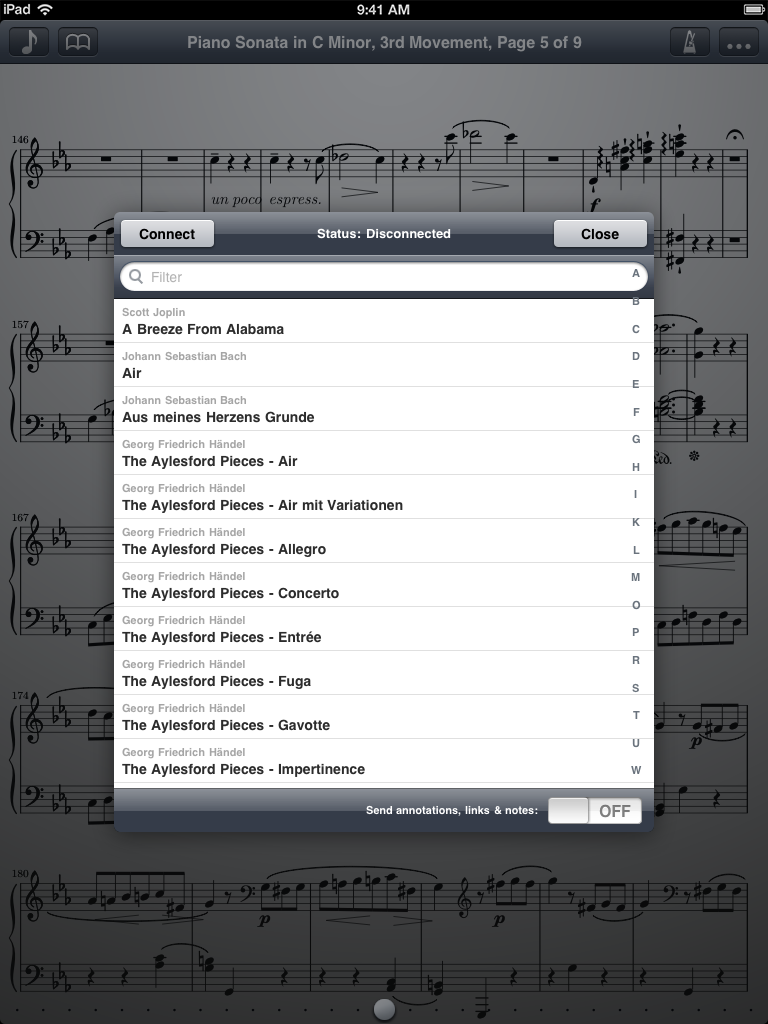 Bluetooth file transfers let users share scores with each other wirelessly
Bluetooth file transfers let users share scores with each other wirelessly
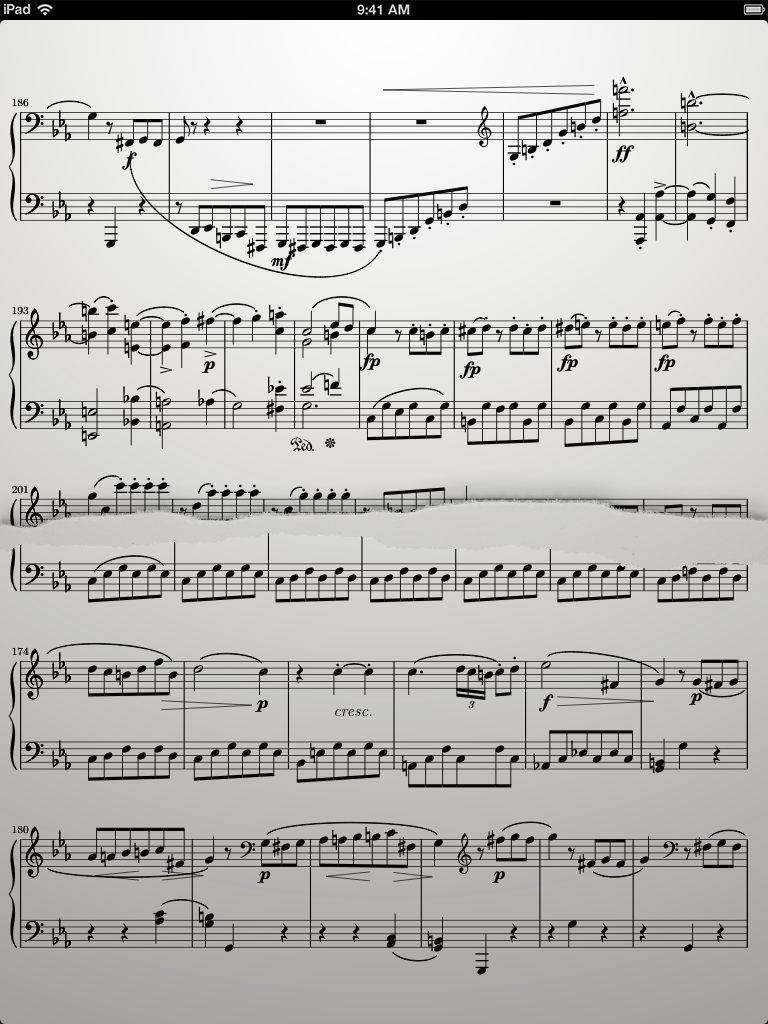 Half-page turns let users do away with jarring page transitions once and for all
Half-page turns let users do away with jarring page transitions once and for all
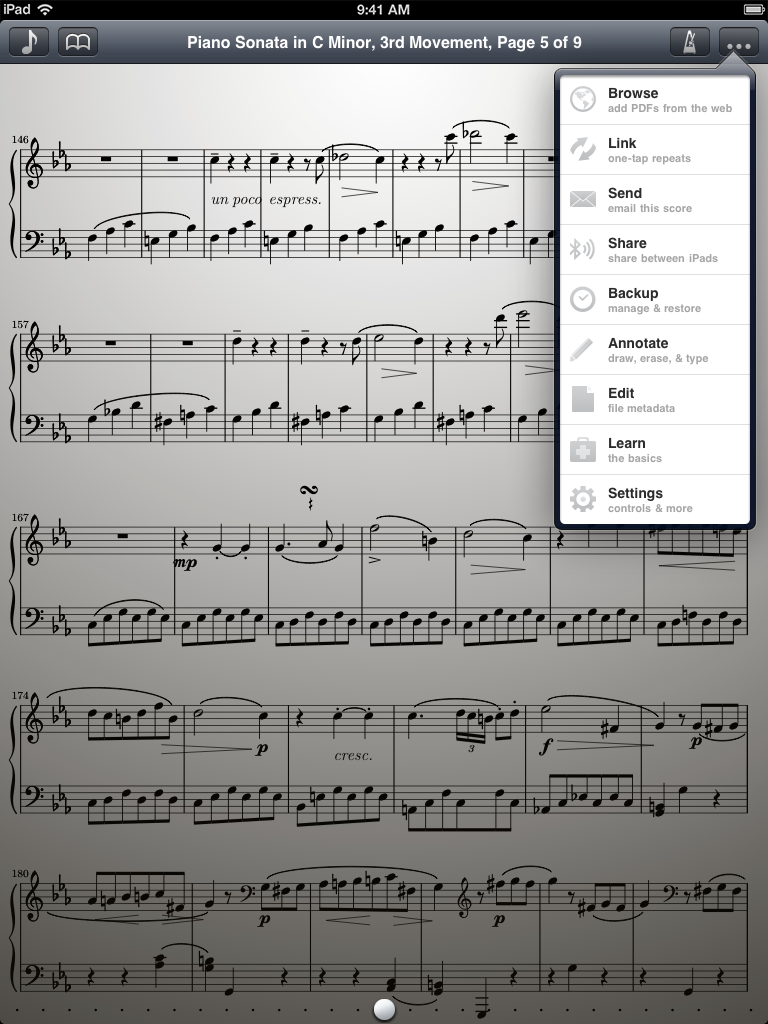
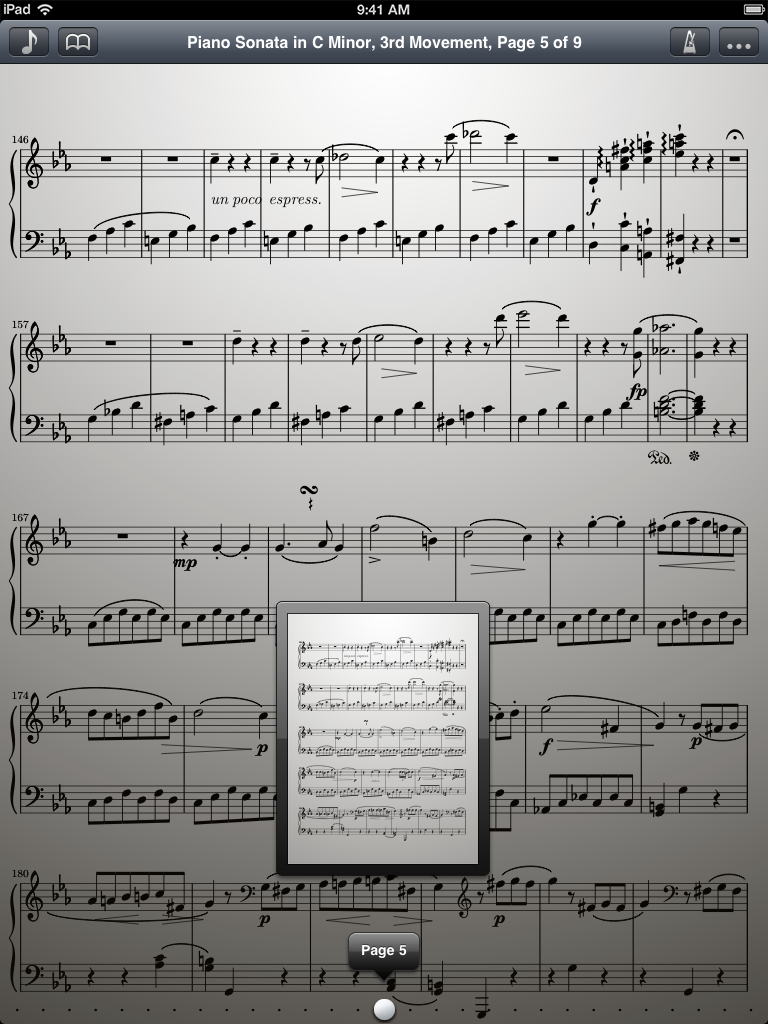 Thumbnail previews made it easier to get to a specific page in version 2.2
Thumbnail previews made it easier to get to a specific page in version 2.2
 Quick Peek allowed users to preview a file in the menu before opening it
Quick Peek allowed users to preview a file in the menu before opening it
 Custom drawing presets made a world of difference
Custom drawing presets made a world of difference
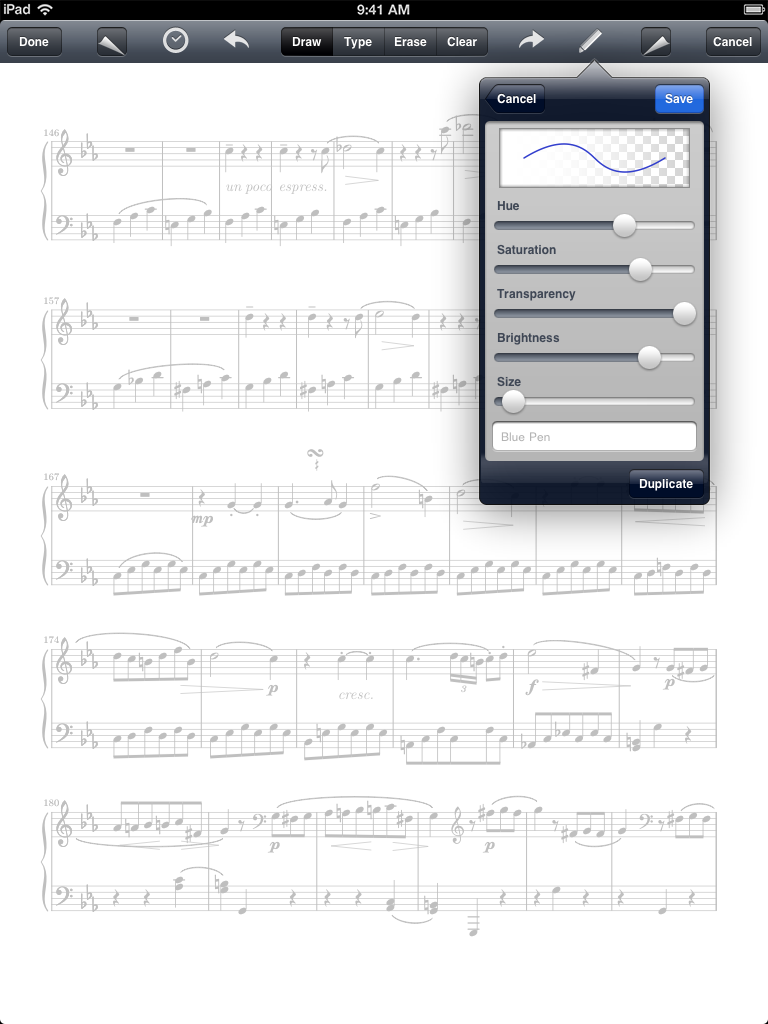
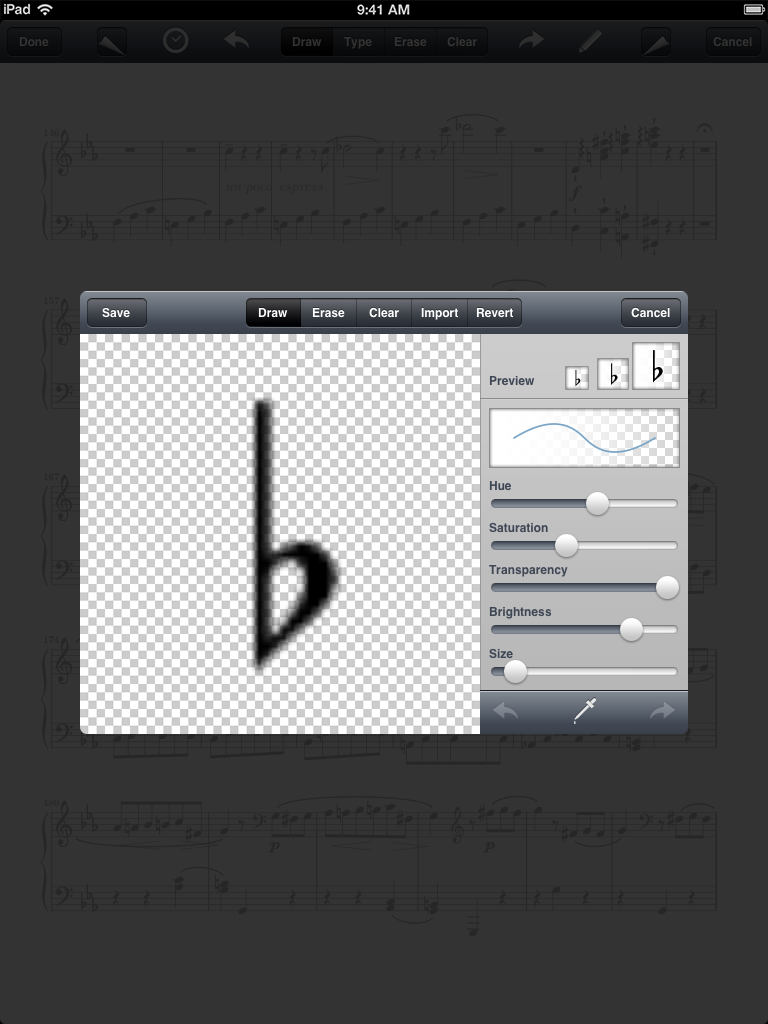 The stamp creator allowed users to draw symbols once and reuse them over and over again
The stamp creator allowed users to draw symbols once and reuse them over and over again
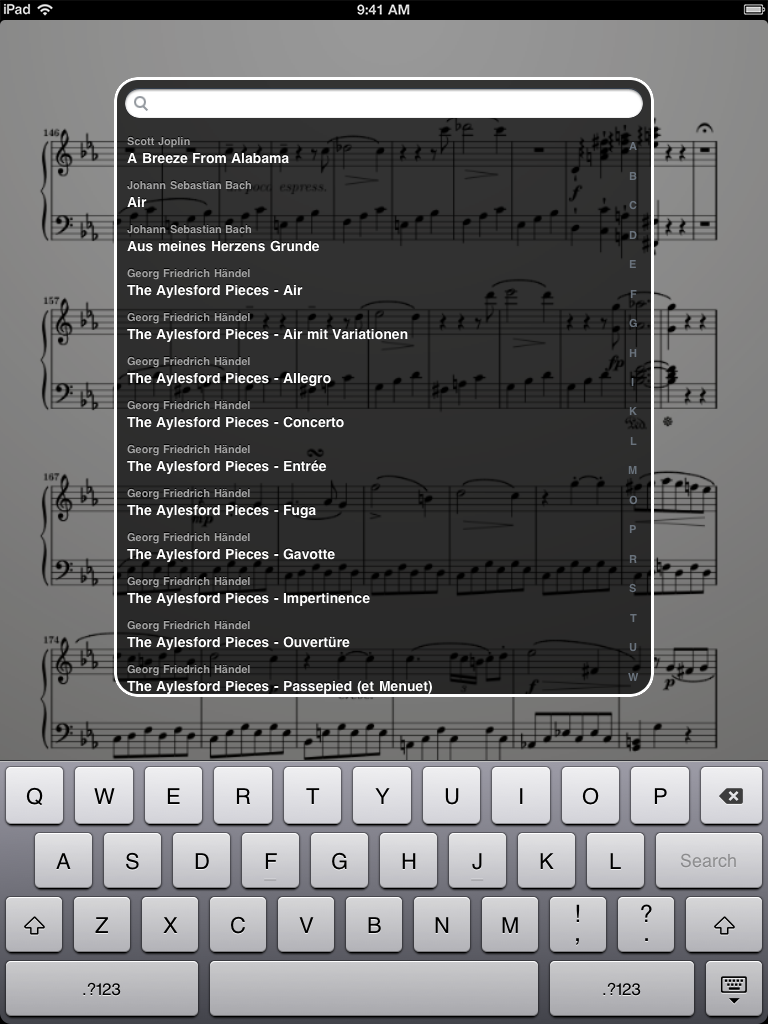 Global search in 2.6 made it easy to find scores or bookmarks in a hurry
Global search in 2.6 made it easy to find scores or bookmarks in a hurry